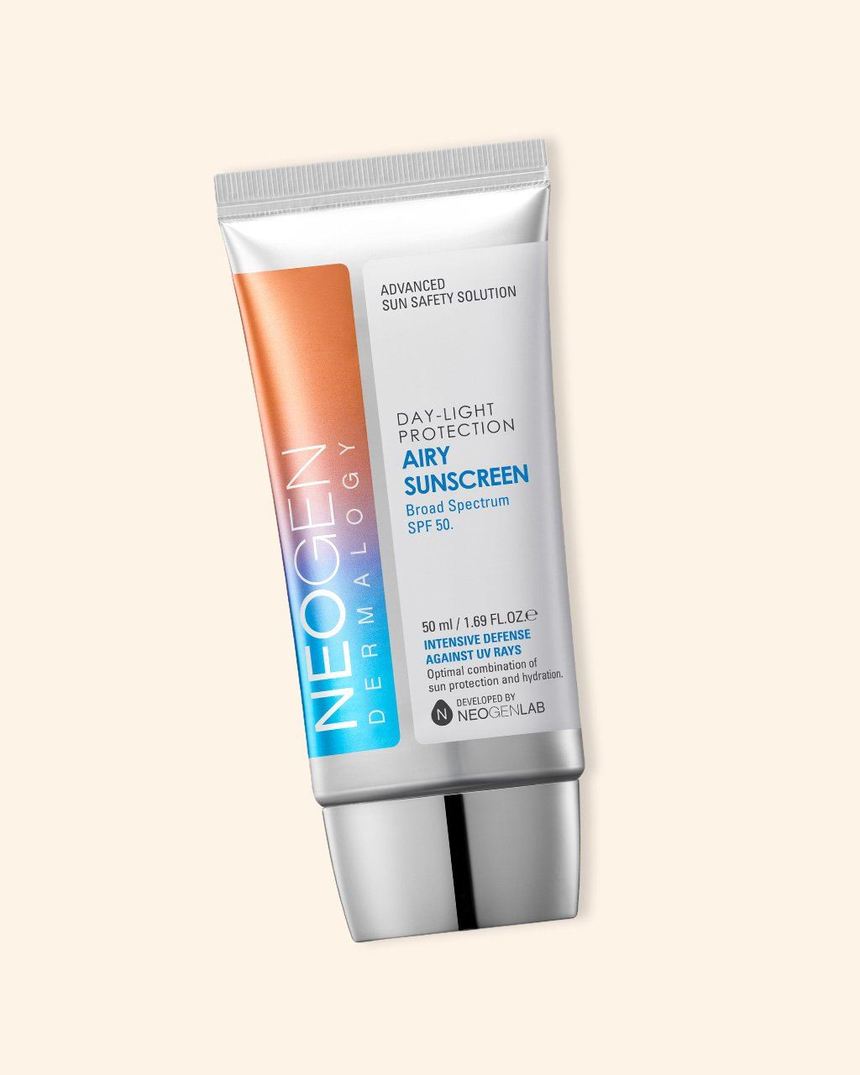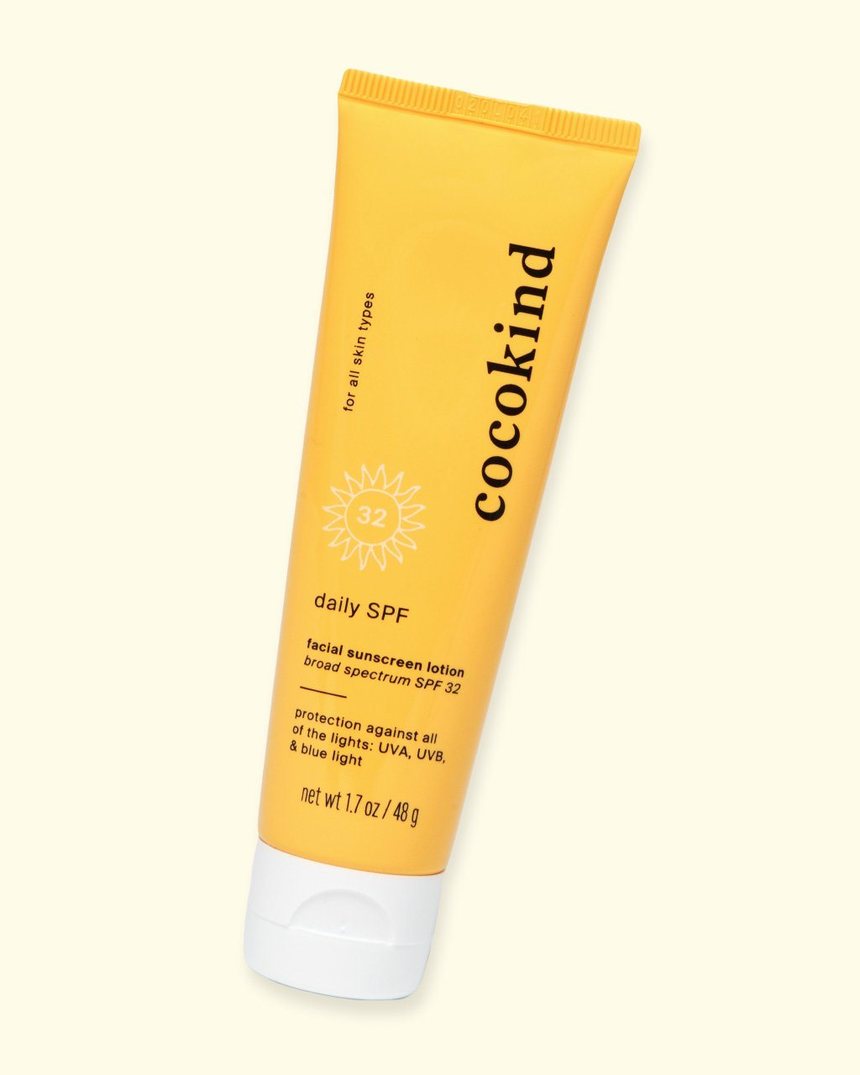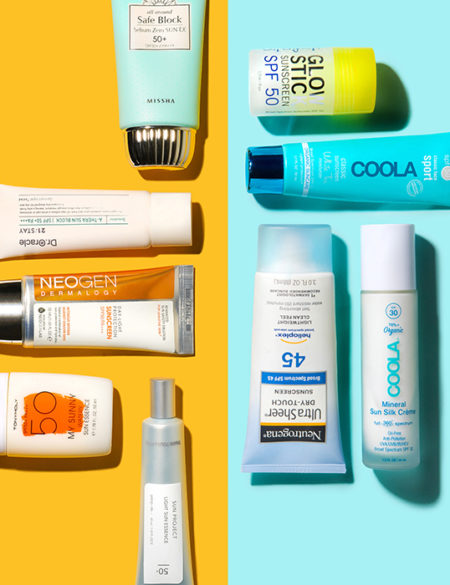Our guide to all things from mineral suncream to ionic compounds.
You’ve probably heard that there’s a difference between physical and chemical sunscreens, and that each type has certain advantages. You might have read that one doesn’t need reapplying, or that one is bad for your health. But what does the science say?
Well, it turns out that the difference between physical and chemical sunscreens is surprisingly not that much, in the context of current sunscreen technology. Let us explain:
Chemical sunscreens are organic; physical sunscreens are inorganic
“Chemical” and “physical” are not very accurate categories for sunscreen ingredients. The sunscreen ingredients classified as “physical”—zinc oxide and titanium dioxide—are definitely chemicals: ionic compounds, specifically. And the sunscreens described as “chemical” (pretty much everything else) need to form a physical layer on top of the skin to protect.
A more accurate description that’s used in most academic settings (dermatology and cosmetic chemistry journals and textbooks) is “inorganic” and “organic.” Inorganic means that a substance doesn’t contain carbon-carbon bonds, which is 100% correct for physical sunscreens that have zinc oxide and titanium dioxide, while organic/chemical sunscreens contain lots of carbon. But for simplicity’s sake, I’ll be using “chemical” and “physical” for the rest of this article.
Chemical and physical sunscreens work very similarly
Both chemical and physical sunscreens mostly absorb UV and turn it into heat. Many people think chemical sunscreens need to be absorbed directly on the skin to work, but the truth is that neither of them need to be absorbed into skin to work (although it will help them last for longer).
And while physical sunscreens have always been photostable (the ability to not degrade once UV rays hit your skin), these days, most chemical sunscreens are as well. You’ll need to reapply both types every two hours, since they can move around on the skin, resulting in patchy coverage.
Their health and environmental effects are pretty much the same
Some chemical sunscreens can absorb into the body and act as hormone mimics, but newer sunscreens are formulated to reduce absorption into the body, and no hormonal effects have been found when sunscreens are used in recommended quantities (not to mention the fact that most people don’t apply anywhere near enough sunscreen anyway!). There’s also been some concern over physical sunscreen nanoparticles being absorbed into the body, but the evidence so far shows that they don’t go beyond the outer dead layers of skin, so no worries there.
In terms of environmental effects, the main concern is the damage to coral close to beaches when sunscreens are washed off swimmers’ skin. The chemical sunscreen oxybenzone and the physical sunscreen titanium dioxide have both been found to potentially have an impact on coral in laboratory studies, but it’s questionable whether they have an effect under realistic conditions.
Additionally, while you can find zinc oxide and titanium dioxide in nature, they’re extensively processed before being put into personal care products to get rid of dangerous impurities like heavy metals.
Chemical sunscreens are more likely to cause allergic reactions
Chemical sunscreens tend to cause more allergic reactions, so if you’ve been allergic to sunscreen in the past, a physical-based sunscreen is a safer bet.
Physical sunscreens are more likely to leave a white cast
Titanium dioxide in particular can sometimes leave a white tint on your skin, although some chemical sunscreen formulations can do this too, although it’s a lot rarer. But if you have sensitive skin, a physical sunscreen is probably your safer choice.
Which is better?
A lot of the sunscreens Soko Glam sells are a combination of chemical and physical sunscreens, and both chemical and physical sunscreens can give excellent protection from the sun’s aging and carcinogenic UV rays. The most popular reasons for picking a particular sunscreen—protection level, consistency, ease of application, greasiness, shininess, price—don’t really depend on whether it contains physical or chemical sunscreen ingredients, but on the overall formulation.
When picking a sunscreen, ignore whether it uses physical or chemical ingredients (unless you’re allergic to a specific ingredient). Instead, focus on the regulated labels on the sunscreen (SPF, broad spectrum, water resistance), and look for reviews of how easy it is to apply the right amount (since that’s the number one cause of sunscreen failure), and how it feels on the skin (since a pleasant-feeling sunscreen will make you want to apply more).
Our current favorite sunscreens, the Neogen Day-Light Protection Airy Sunscreen, a mix of physical and chemical ingredients, and the Cocokind Daily SPF, a physical sunscreen, both deliver great UV ray coverage. It all comes down to personal preference!










